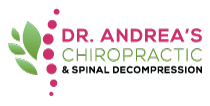
As more health care providers in the U.S. discover the benefits of taking a holistic approach to treating and managing medical conditions, many are incorporating alternative treatments known as Eastern medicine into their practices. While it’s common to see Western medicine and Eastern medicine as opposing approaches to care, you and your health care provider may find success by developing a treatment plan that combines the two.
What is Western medicine?
Western medicine is the health care you receive when you go to a doctor’s office, medical clinic, urgent care center, emergency department, or hospital. This type of care—sometimes called traditional medicine—is based on scientifically proven methods for diagnosing conditions, treating illnesses, and protecting your health and well-being.
Providers of Western medicine include doctors and physician assistants, specialists, nurses and nurse practitioners, surgeons, pharmacists, dentists, psychiatrists and mental health therapists, and physical, occupational, and speech therapists.
Western medicine covers a wide range of procedures and therapies:
- Annual preventive checkups
- Healthy lifestyle practices
- Lab work and blood tests
- Over-the-counter and prescription medications
- MRIs, X-rays, and imaging scans
- Chemotherapy and radiation therapy
- Surgery
In addition to promoting the overall mental and physical health of their patients, practitioners of Western medicine seek to prevent diseases and manage symptoms to improve the quality of life. Care also includes diagnosing conditions and slowing the progression of—or possibly curing—diseases.
What is Eastern medicine?
Eastern medicine is more than 3,000 years old and focuses on treating the person as a whole and embracing the body, mind, and spirit. The goal is to restore balance and proper flow of a vital life force called qi or chi. Although it is not well-researched in the West, evidence-based findings support many Eastern medicine practices.
Practitioners of Eastern medicine—sometimes referred to as Chinese medicine—maintain that disease can occur when an imbalance exists between the two components, yin and yang, that make up your life force.
Examples of Eastern medicine include:
- Acupuncture therapy, a form of traditional Chinese medicine that involves inserting very thin needles into the body at strategic points and various depths
- Herbal remedies that come in the form of capsules, teas, liquid extracts, powders, or custom formula that an herbalist creates for you
- Cupping therapy, a soft tissue alternative approach that involves placing cups on your body to form a vacuum with suction that pulls the skin upward
- Tai chi, an ancient practice that uses low-impact, gentle movements and focused breathing to improve your health
Herbal supplements may interact with prescription drugs and lead to adverse side effects, so always consult your health care provider before taking a new dietary supplement. To help ensure your safety, only take herbal remedies that have received approval from the Food and Drug Administration (FDA).
The National Center for Complementary and Integrative Health has developed a series of fact sheets that provides basic information about specific herbs and botanicals, potential side effects, and cautions.
Complementary medicine takes a holistic approach to health care
In some cases, Eastern medicine can complement Western healthcare practices. For example, treating back pain through a combination of acupuncture and traditional medical care is often more effective than a taking a stand-alone medical approach.
Of course, diseases such as cancer may require chemotherapy and other aggressive treatments, as Eastern approaches alone cannot sufficiently treat the condition.
With complementary medicine—or alternative medicine—your health care provider or primary care physician develops a treatment plan that combines different approaches. In some cases, complementary medicine may include Eastern medicine techniques.
Complementary medical therapies include:
- Chiropractic adjustment, a procedure in which a trained specialist applies controlled, sudden forces to your spinal joints
- Massage therapy, which involves rubbing and kneading soft body tissues, including muscle, connective tissue, tendons, ligaments, and skin
- Mindfulness meditation, a practice in which you focus on being fully engaged in the present moment, without interpretation or judgment
- Guided imagery, a type of relaxation technique that involves evoking mental images to induce a relaxed, focused state
Dr. Andrea takes a holistic approach to health care
From chiropractic adjustments and soft tissue therapies to acupuncture and myofascial release, Dr. Andrea’s Chiropractic & Spinal Decompression provides a wide range of complementary medical therapies to promote your overall health and well-being. To find out if complementary medicine may be right for you, contact Dr. Andrea today or call us at 918-364-2225 to schedule an appointment.



